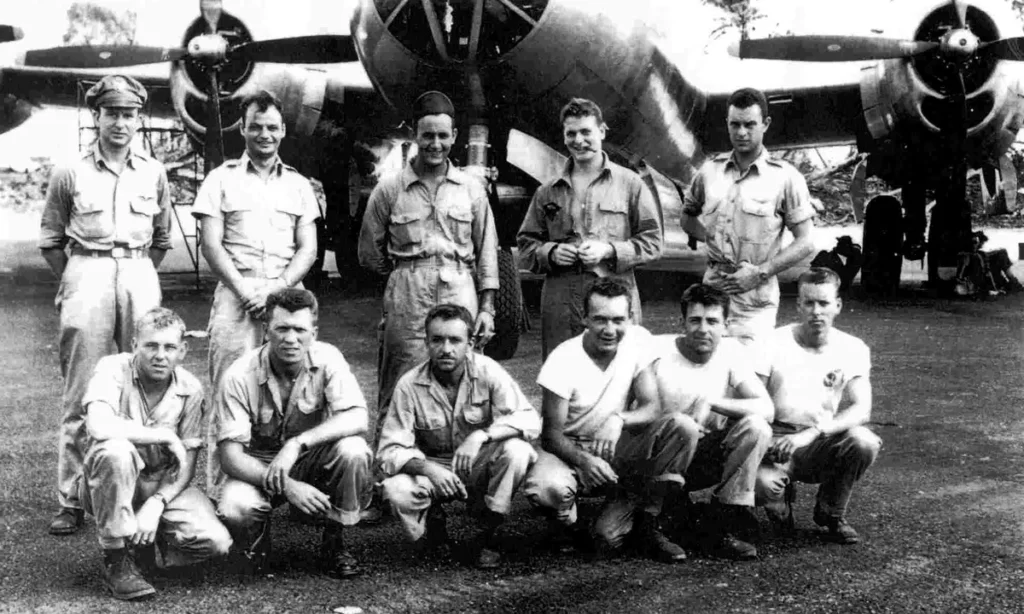Performing surgery or medical procedures on a living creature for experimentation is known as vivisection. It is one of the most heinous Japanese torture methods used during the Second World War. But did you know what happened to the eight airmen who crashed in Japan in 1945?
Eight American Airmen were taken to Kyushu University Medical School and dissected alive after their bomber crashed in Japan in 1945.
The Survivors of the Crash
A B-29 Superfortress had just completed a run against an airfield near Fukuoka, Japan, on May 5th, 1945. The end of WWII was near, but Japan and the United States were still at odds. A Japanese plane rammed the B-29 plane while it was in the air. Everyone except the pilot jumped, resulting in 12 men parachuting to the ground. One man was killed when his parachute cords were severed by a passing plane. The villagers killed two more shortly after landing, with one of the men fighting back before turning his last bullet on himself.
Captain Marvin Watkins was among the nine men who remained. Watkins was separated from the others and taken to Tokyo for interrogation. He was severely beaten, but he survived and returned to his home in Virginia. A military physician apprehended the rest of his men, eight US soldiers, and transported them to a nearby facility: Kyushu Imperial University’s College of Medicine. The men refused to leave the facility. (Source: Ranker)
What Happened After the Crash?
According to reports, the eight remaining Americans were chosen for medical experimentation by a military physician and a colonel in the local regiment. The decision was made quickly, and the experiments began when the men arrived at the University.
Teddy Ponczka, one of the US airmen, was injured when a spear stabbed him after landing. According to medical reports, it was either in his right shoulder or chest and was profound. Ponczka was separated from the others, but no one seemed to mind. There was no panic or outrage as more men were apprehended. The men assumed they were merely receiving medical attention. After all, these doctors in masks and gowns were probably patching them up. (Source: Ranker)
What Happened to the Corpses of the Airmen?
Even after their deaths, the eight victims were not buried. As each man died, his remains were sectioned, formaldehyde preserved, and displayed for anatomy students to study. Toshio Tono recalls removing eyeballs from bodies to preserve them. The bodies were to be kept for future experiments and research.
In August 1945, only a few months after these events, the Japanese surrendered to the United States. The surgeons were concerned because they realized that so much evidence of the vivisections might not be good. The body parts, records, and evidence were eventually destroyed. For a time, they claimed that the POWs in their care had been relocated. The soldiers’ remains have yet to be discovered. (Source: Ranker)
Was Cannibalism Involved?
During a hearing, US attorneys claimed that the liver of at least one man who had it removed had been saved for other purposes. Officers had cooked, served, and eaten it as a fancy dish. According to other reports, the professionals who removed the livers had eaten them.
In the end, there was insufficient evidence to determine whether this account was accurate, so the cannibalism charges were dropped. (Source: Ranker)
Image from TheGuardian
